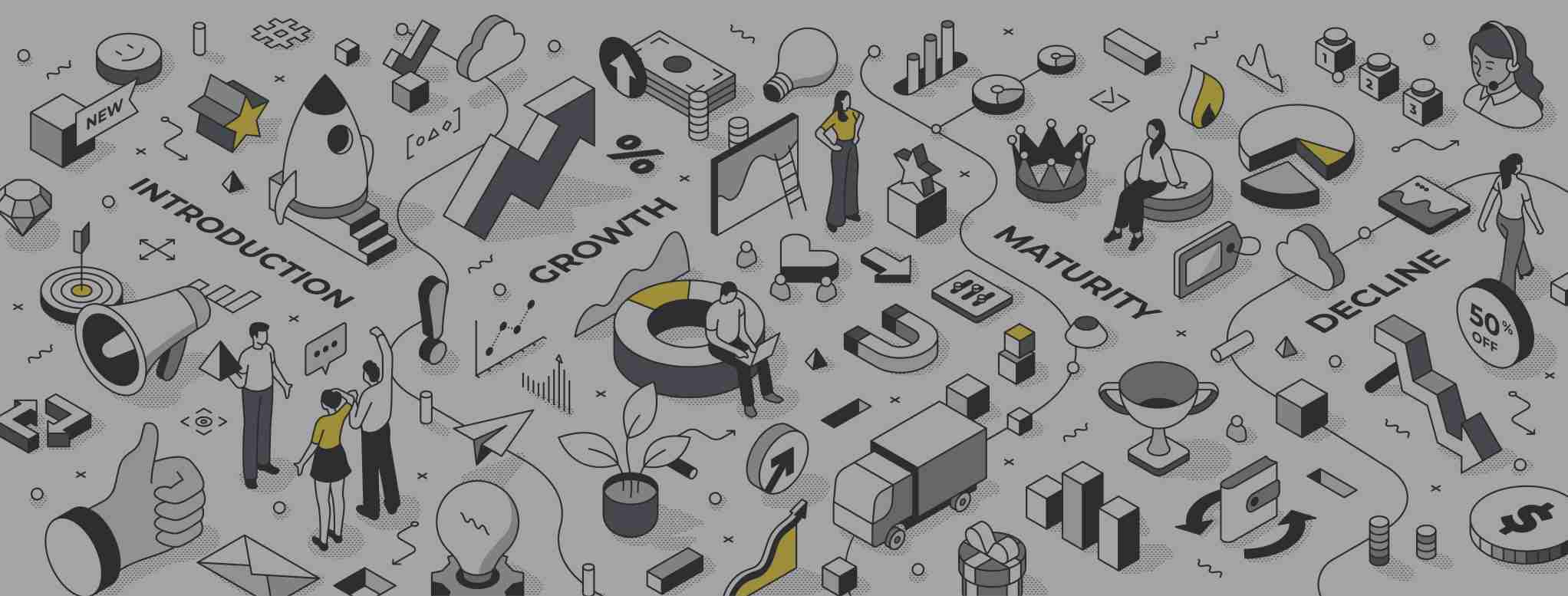There are three challenges SaaS marketers have to face when it comes to social media marketing. First, choosing the right platform to focus on. Given the nature of the B2B industry, it just wouldn't make sense to build an audience on Snapchat or TikTok.
That said, your main platforms are most probably going to be LinkedIn, Facebook and Twitter. You can also consider Instagram, provided you can create content that shows what's going on behind the scenes and highlights the company culture. However, if your budget is limited, then you need to prioritise and choose the platform that's best for reaching your audience AND generating leads.
The second is explaining the value of your product or service in a short and captivating way to capture the always fleeting attention of social media users. And third, differentiating yourself from the competition. To overcome these three main challenges, I recommend using the following strategies to make use of social media as an additional channel for driving organic traffic for your SaaS business.
This blog is a continuation of the cycle. I have previously discussed how Google Ads can benefit SaaS and the vital importance of SEO.
#1 Competitive Analysis
A social media analysis of the competition can give you valuable insights into different tactics your rivals use. This helps with identifying what works for them as well as uncovering areas for potential improvement. Additionally, competitors are often a great source of inspiration for your own content creation when it comes to writing style and the creative side of things (for example, the way they design posts announcing new features).
My process for competitive analysis on social media
- First, I identify my main competitors. This step is kind of similar to what you would do if you were performing keyword research for SEO. I type in the keyword related to our business (inbound marketing agency) into google and check the results on the first page. After that, I look at the profiles of the social media agencies and analyse where they are most active.
- Next, I gather data and analyse their activity. I focus on their top posts, engagement rates, audience growth, and hashtags used. Here, I am trying to benchmark my results to theirs and understand what they do differently that brings them success. This can be as subtle as using certain words and emojis or posting at different times of the day.
- Then I analyse their website content. A lot of SaaS companies use blogs to create content to distribute it with email newsletters and social media. Looking through their blogs will give you ideas on what type of content might resonate with your audience and help with identifying any potential content gaps.
- Finally, I use the data to create an actionable plan for improvement. It's based on the competitors' best social media content and the ways I can achieve similar results. I also focus on minimising any potential weaknesses in my social media strategy and look for unique opportunities to outperform the competition.
Sidenote
If you want to go a step further and connect social media audit with your content marketing and SEO activities, you can use a “skyscraper technique.” With this method, you will look specifically for competition's content with a lot of backlinks that can be written in a better way. The goal is to create a better, more detailed post and earn some of the original backlinks.
If you're successful, it will be a double win - both for your SEO rankings and social media engagement.
#2 Visual Content
Visual content is crucial if you want to engage a social media audience. Visuals help to grab the attention of the visitors right away and are super useful when it comes to explaining complex ideas in an easily digestible form.
Finally, they also give you a chance to create unique and original content that's related directly to your brand. In short, visuals matter and their benefits are highly relevant to the typical challenges of social media marketing in the B2B space.
Types of visual content
- Video content that educates your audience about the product's benefits and features. The popularity of video is increasingly growing and its positive ROI is hard to doubt. Videos are the best performing digital content right now.
- Original and informative infographics about your product and the state of the industry. This also includes different types of charts and interesting statistics.
- Screenshots showing the use of your product or illustrating part of a how-to post or a tutorial. Make sure they are easy to read and not blurred or distorted.
- Simple animated gifs are a great way to add some creative variety to your social media content.
- Behind the scenes content, showing what's currently going on in the company. This is fantastic for building a brand personality and creating a human connection (more on that later).
This is a type of content that generates engagement on social media:

#3 Excellent Customer Support
This is what all of the popular SaaS brands have in common. They take time to engage with their community, provide answers and create a conversation. And given the fact that social media is for many consumers the top choice for asking questions and solving their problems, it only makes sense for your firm to be instantly available on social and build valuable relationships with prospects or current customers.
Many times, you can drive the potential buyers further down their journey by answering questions about your pricing or main features and making it easier for them to make a purchase in the future.
SEMRush does a great job of actively listening to their audience on Twitter by asking open questions and letting customers know exactly what they need to do next.

It doesn't always have to be about your company, either. By creating a culture of employee engagement, you can stand out and teach your audience about the product without being a pushy salesperson. Like this:

Finally, you can use social media as a way to showcase a brand personality by using a conversational tone and humour. People come to social media to have fun and engage with others. Your brand can play a part in this if you make an effort to create positive experiences for the visitors.
#4 Influencer Marketing
After the initial boom of influencer marketing in B2C a couple of years ago, this trend is slowly finding its way to the B2B industry as well with its total valuation of $8 billion in 2019, according to a Business Insider report.
Influencer marketing involves working with individuals who have a voice and dedicated social following in their respective fields. Their influence is based on the trust they built with their audience, and their recommendations serve as a form of social proof to your potential customers.
The benefits of working with relevant influencers for brands are numerous. They include increased brand awareness, deeper customer relationships, a broader variety of content or more leads and sales.
Furthermore, a recent study from Influencer Marketing Hub shows that only 30% of B2B companies are currently running ongoing influencer campaigns. This clearly indicates an unexplored opportunity. The study further suggests that the current platforms of choice for B2B marketers looking to utilise influencer marketing are Facebook, LinkedIn, and Twitter (in that order.)

Influencers work great in the SaaS industry where users rely on recommendations and the experience of others to make purchasing decisions.
The best practices for SaaS influencer marketing:
- Find the right influencer by cooperating with individuals that align with your brand. Usually, these are the influencers your audience knows and follows. Micro-influencers are often the best choice as they can offer higher engagement rates while charging less for collaboration.
- Establish open communication between you and the influencer by informing them about your campaign goals and expectations right from the start.
- Don't actively look for one-off features. Instead, think long-term and build collaborative relationships by being generous and authentic in how you treat the influencer. Creative freedom is important.
- Monitor the influencer marketing ROI. This goes without saying. It's great if you manage to create a positive relationship between your company and the influencer but the metrics are ultimately what matters most for us marketers. Analyse them regularly based on the campaign goals.
Conclusion
Social media marketing can support your campaign goals whether you want to increase your inbound traffic or get more leads in the sales pipeline. It may not be as easy when you work in SaaS and your audience is more difficult to engage but it can be done. Start with a detailed competitive analysis to uncover your weaknesses and see what your competition does better.
Then, use this knowledge to create a variety of unique visual content and focus on providing excellent customer support every day. And if you've got the resources, experiment with influencer marketing, it has great ROI potential.
BIAS is an award-winning digital agency that does social media marketing for you as part of an omnichannel customer acquisition strategy, if you need support with driving more traffic to your SaaS website, book a meeting with our team here.




